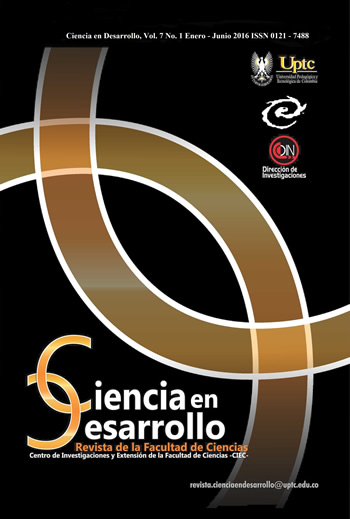Effect of Informative Censoring on the Power of Some Log-Rank Type Tests.

Abstract
The survival analysis is a set of techniques for analyzing the elapsed time until the occurrence of an event of interest, also called lifetime, which can be completely or partially observed. In practice, a common problem is to compare the survival experiences of at least two groups under study. The analysis strategy most common is to use Log-Rank tests, but these do not distinguish whether the mechanism of censoring it is informative or not. In this work it was evaluated, under different simulation scenarios, the estimated power of some Log-Rank tests when informative censoring is presented. We found evidence favoring the Wilcoxon test.
Keywords
Análisis de supervivencia, censura informativa, tiempo de falla, pruebas Log-Rank, potencia de la prueba. (Failure Time, Informative, Log-Rank Tests Censoring, Survival Analysis, Power of a Test.)
References
- D. Collett, “Modelling Survival Data in Medical Research”, Chapman & Hall, New York, 2003.
- D. G. Kleinbaum, “Survival analysis”, Springer, Verlag, New York, 1995. DOI: https://doi.org/10.1007/978-1-4757-2555-1
- P. D. Allison, “Survival Analysis Using the SAS System: A Practical Guide”, SAS Institute Inc, New York, 2000.
- M. Pintilie, “Competing Risks”, John Willey & Sons, England, 2006. DOI: https://doi.org/10.1002/9780470870709
- M. Tableman, and J. Sung, Survival Analysis Using S, Chapman & Hall, New York, 2003. DOI: https://doi.org/10.1201/b16988
- F. Wilcoxon, “Individual Comparisons by Ranking Methods”, Journal of the Royal statistical Society, vol. 1, pp. 80-83, 1945. DOI: https://doi.org/10.2307/3001968
- R. Peto and J. Peto, “Asymptotically Efficient Rank Invariant Test Procedures”, Journal of the Royal statistical Society, vol. 135, pp. 185-207, 1972. DOI: https://doi.org/10.2307/2344317
- R. E. Tarone, and J. Ware, ‘On distributionfree tests for equality of survival distributions”, Biometrika, vol. 64, pp. 156-160, 1972. DOI: https://doi.org/10.1093/biomet/64.1.156
- A. Davey, and Savla J., “ Statistical power analysis with missing data: a structural equation modeling approach”, Routledge Taylor & Francis Group ,New York, 2010. DOI: https://doi.org/10.4324/9780203866955
- J. Yan, “Enjoy the Joy of Copulas”, Journal of Statistical Software, vol. 21, pp. 1-21, 2007. DOI: https://doi.org/10.18637/jss.v021.i04
- D. M. Dominique, and S. Kotz, “Correlation and Dependence”, Imperial College Press, London,
- R. B. Nelsen, “An introduction to Copulas”, Springer , New York, 2006.
- G. Escarela and J. Carriere, “Fitting competing risks with an assumed copula”, Statistical Methods in Medical Research 12, New York, 2003. DOI: https://doi.org/10.1191/0962280203sm335ra
- C. Genest, “Frank’s Family of Bivariate Distributions”, Biometrika, vol. 74, pp. 549-555, 1987. DOI: https://doi.org/10.1093/biomet/74.3.549